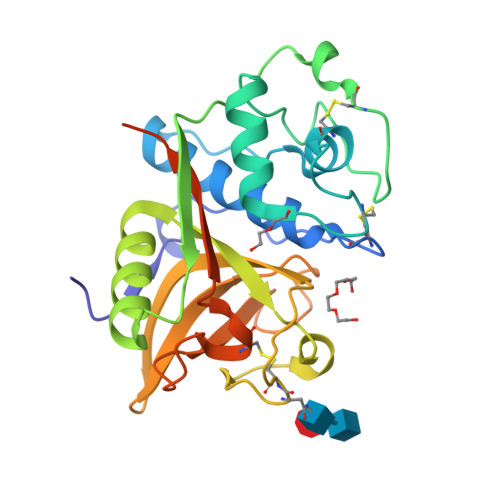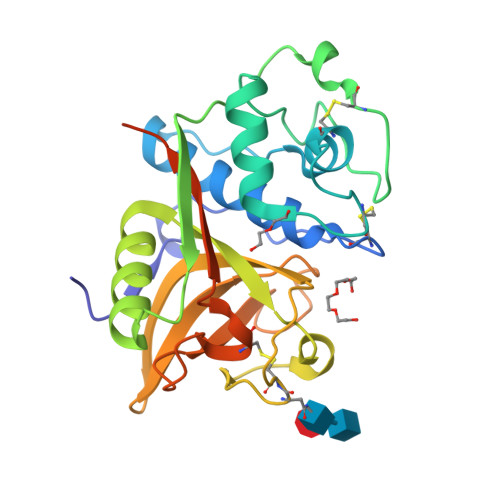Crystal structure of a papain-fold protein without the catalytic residue: a novel member in the cysteine proteinase family
Zhang, M., Wei, Z., Chang, S., Teng, M., Gong, W.(2006) J Mol Biology 358: 97-105
- PubMed: 16497323
- DOI: https://doi.org/10.1016/j.jmb.2006.01.065
- Primary Citation of Related Structures:
2B1M, 2B1N - PubMed Abstract:
A 31kDa cysteine protease, SPE31, was isolated from the seeds of a legume plant, Pachyrizhus erosus. The protein was purified, crystallized and the 3D structure solved using molecular replacement. The cDNA was obtained by RT PCR followed by amplification using mRNA isolated from the seeds of the legume plant as a template. Analysis of the cDNA sequence and the 3D structure indicated the protein to belong to the papain family. Detailed analysis of the structure revealed an unusual replacement of the conserved catalytic Cys with Gly. Replacement of another conserved residue Ala/Gly by a Phe sterically blocks the access of the substrate to the active site. A polyethyleneglycol molecule and a natural peptide fragment were bound to the surface of the active site. Asn159 was found to be glycosylated. The SPE31 cDNA sequence shares several features with P34, a protein found in soybeans, that is implicated in plant defense mechanisms as an elicitor receptor binding to syringolide. P34 has also been shown to interact with vegetative storage proteins and NADH-dependent hydroxypyruvate reductase. These roles suggest that SPE31 and P34 form a unique subfamily within the papain family. The crystal structure of SPE31 complexed with a natural peptide ligand reveals a unique active site architecture. In addition, the clear evidence of glycosylated Asn159 provides useful information towards understanding the functional mechanism of SPE31/P34.
Organizational Affiliation:
National Laboratory of Biomacromolecules, Institute of Biophysics, Chinese Academy of Sciences, Beijing 100101, P.R. China.





















